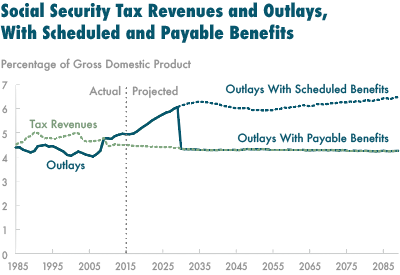-
-
-
-
-
-
About those Tax Cuts
-
-
-
About those Tax Cuts
References:
https://www.cbo.gov/publication/42729

https://www.cbo.gov/publication/51011

Greg Mankiw, a conservative Republican economist who served as chairman of the Council of Economic Advisors under President George W. Bush, wrote in 2007:
I used the phrase "charlatans and cranks" in the first edition of my principles textbook to describe some of the economic advisers to Ronald Reagan, who told him that broad-based income tax cuts would have such large supply-side effects that the tax cuts would raise tax revenue. I did not find such a claim credible, based on the available evidence. I never have, and I still don't...My other work has remained consistent with this view. In a paper on dynamic scoring, written while I was working at the White House, Matthew Weinzierl and I estimated that a broad-based income tax cut (applying to both capital and labor income) would recoup only about a quarter of the lost revenue through supply-side growth effects. For a cut in capital income taxes, the feedback is larger — about 50 percent — but still well under 100 percent. A chapter on dynamic scoring in the 2004 Economic Report of the President says about the the [sic] same thing.[110]
Glenn Hubbard, who preceded Mankiw as Bush's CEA chair, also disputed the assertion that tax cuts increase tax revenues, writing in his 2003 Economic Report of the President: "Although the economy grows in response to tax reductions (because of higher consumption in the short run and improved incentives in the long run), it is unlikely to grow so much that lost tax revenue is completely recovered by the higher level of economic activity."[111]
In 1986, Martin Feldstein — a self-described "traditional supply sider" who served as Reagan's chairman of the Council of Economic Advisors from 1982 to 1984 — characterized the "new supply siders" who emerged circa 1980:
What distinguished the new supply siders from the traditional supply siders as the 1980s began was not the policies they advocated but the claims that they made for those policies...The "new" supply siders were much more extravagant in their claims. They projected rapid growth, dramatic increases in tax revenue, a sharp rise in saving, and a relatively painless reduction in inflation. The height of supply side hyperbole was the "Laffer curve" proposition that the tax cut would actually increase tax revenue because it would unleash an enormously depressed supply of effort. Another remarkable proposition was the claim that even if the tax cuts did lead to an increased budget deficit, that would not reduce the funds available for investment in plant and equipment because tax changes would raise the saving rate by enough to finance the increased deficit...Nevertheless, I have no doubt that the loose talk of the supply side extremists gave fundamentally good policies a bad name and led to quantitative mistakes that not only contributed to subsequent budget deficits but that also made it more difficult to modify policy when those deficits became apparent.[112]
EFFECT OF REAGAN, KENNEDY, AND BUSH TAX CUTS ON REVENUES
The argument that the near-doubling of revenues during Reagan's two terms proves the value of tax cuts is an old argument. It's also extremely flawed. At 99.6 percent, revenues did nearly double during the 80s. However, they had likewise doubled during EVERY SINGLE DECADE SINCE THE GREAT DEPRESSION! They went up 502.4% during the 40's, 134.5% during the 50's, 108.5% during the 60's, and 168.2% during the 70's. At 96.2 percent, they nearly doubled in the 90s as well. Hence, claiming that the Reagan tax cuts caused the doubling of revenues is like a rooster claiming credit for the dawn.
Furthermore, the receipts from individual income taxes (the only receipts directly affected by the tax cuts) went up a lower 91.3 percent during the 80's. Meanwhile, receipts from Social Insurance, which are directly affected by the FICA tax rate, went up 140.8 percent. This large increase was largely due to the fact that the FICA tax rate went up 25% from 6.13 to 7.65 percent of payroll. The reference to the doubling of revenues under Reagan commonly refers to TOTAL revenues. These include the above-mentioned Social Insurance revenues for which the tax rate went UP. It seems highly hypocritical to include these revenues (which were likely bolstered by the tax hike) as proof for the effectiveness of a tax cut.
Hence, what evidence there is suggests there to be a correlation between lower taxes and LOWER revenues, not HIGHER revenues as suggested by supply-siders. There may well be valid arguments in favor of tax cuts. But higher tax revenues does not appear to be one of them.

